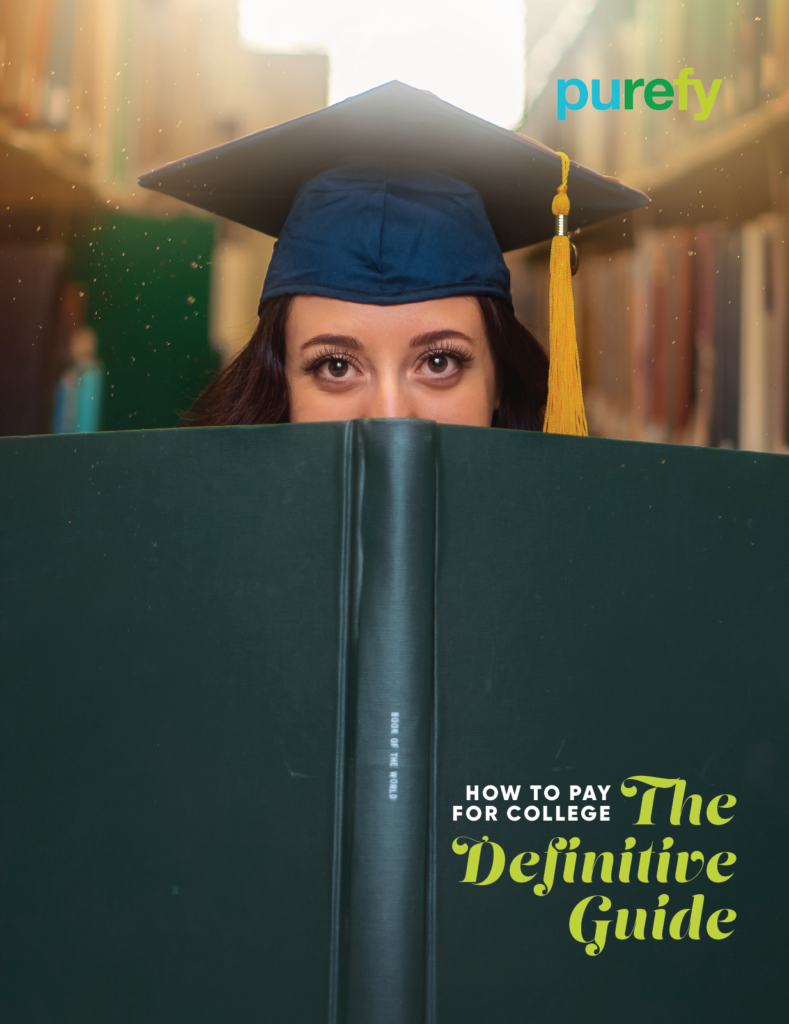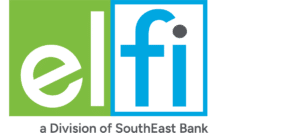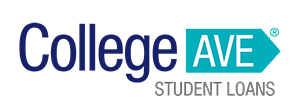
Free 13-page eBook: How to Pay For College
Download instantly with just one click
Free eBook: How to Pay for College
Download instantly with
just one click

You’re a college student trying to figure out the best way to live during your time in school. You’ve heard that living on campus has benefits, but you’re not sure if it’s worth the cost. You’ve also heard that living off campus can be cheaper, but you’re not sure if it’s worth the hassle. What should you do?
We know choosing between living on campus vs. off campus can be tricky. Read on to learn about the pros and cons of each housing option, how financial aid can help cover living expenses, and how student loans can close funding gaps.
The requirement for on-campus housing at some schools
Most colleges and universities offer on-campus housing, which is operated by the school and usually located on or near campus. It can be dormitory-style, which is generally shared rooms and common areas, or apartment-style, with private bedrooms and shared living space.
Some schools require first and second-year students to live on campus, while others allow students to choose whether or not they want to live on campus. There are benefits and drawbacks to both living on campus and off campus.
For example, living on campus generally costs more than living off campus, but it can be more convenient because it is closer to classes and other campus amenities.
Additionally, some research has shown that students who live on campus have higher GPAs than those who live off campus. Therefore, whether or not to live on campus is a decision that students must weigh based on their needs and preferences.
According to ThoughtCo, some colleges and universities insist that you live in the residence halls for your first year or two of education. Others require campus residency throughout all four years. A few schools don’t have any residency requirements at all.
If you’re unsure whether your school requires you to live on campus, check out its website or contact the admissions office.
Cost of on-campus housing vs. off-campus housing
It’s essential to factor the cost of housing into your college budget. Research.com states that the price of room and board represents 30% of the overall budget for an undergraduate.
Many factors affect the cost of housing options, including:
- Location. Schools in urban areas tend to have higher housing prices than those in rural areas.
- Year lease vs. school year. US News reports that students who live in residences are expected to follow an academic schedule. In contrast, those living at off-campus properties typically must stay for an entire year.
- The ability to cook your meals or have meal service. The cost of food can quickly add up, especially if you’re eating out all the time. On-campus housing is typically more expensive, but a few factors can offset the cost. For example, many schools offer meal plans to save money on food.
If you need help selecting the best college within your budget, check out our guide on choosing the right college experience.
Pros and cons of living on campus
Living in school dorms has its pros and cons. Here are a few of each:
Pros
- You’re close to your classes. Proximity to class can be a big perk, especially if you don’t have a car or prefer not to use public transportation. On-campus living allows you to walk to class, saving money on transportation costs.
- You have access to campus resources. Living on campus will allow you to be close to the library, gym, and other university facilities.
- You can meet new people. One of the best things about college is meeting new people. Living on campus will give you more opportunities to make friends and network.
Cons
- It can be expensive. As we mentioned, the cost of on-campus housing can add up quickly. You’re often paying a premium for the convenience of walkability and campus resources.
- You might have to share a room. If you’re not used to sharing your space, this can be a big adjustment. Roommates are often randomly paired or assigned based on major, so you may not get along with your roommate.
- You might have a roommate who doesn’t respect your boundaries. An inconsiderate roommate could make your living experience uncomfortable, and roommate reassignment isn’t always easy.
Please remember that some pros and cons may vary depending on your preferences and budget. On-campus living might suit you if you have the funds to support it or don’t mind sharing a room with another student. However, living on campus may not be ideal if you want to live near your part-time job or are looking to save money wherever possible.
The 4 Best Companies for Private Student Loans
Our Top-Rated Picks for 2023 Offer Low Rates and No Fees
Option to skip a payment once a year

In-school deferment available if you return for another degree

Optional $25 payment plan during school to reduce interest after graduation

1% Cash Back Graduation Reward program
Fixed Rate
Variable Rate

Fixed Rate
Variable Rate
Pros and cons of living off campus
There are several pros and cons to living off campus. Here are a few examples of each:
Pros
- It can be cheaper. The cost of living off campus will depend on the location and other factors, but it’s often more affordable than living in a dorm. You’ll have the flexibility of shopping around for more options to fit your budget, and can live with more roommates to reduce housing costs.
- You have more privacy. This can be a big perk if you’re not into the social scene or sharing your space.
- You can have more freedom. When you live off campus, you’re not subject to the rules and regulations of on-campus housing.
Cons
- It can be farther from your classes. This is one of the most significant drawbacks of living off campus. If you don’t have a car or reliable transportation, you might have to spend a lot of time traveling back and forth.
- You might have fewer resources. Living off-campus means you’re not as close to things like the library, gym, and other campus facilities.
- You might feel isolated from the college community. This is one of the main reasons why colleges require students to live on-campus for their first year or two. It’s a great way to get involved and meet new people.
The pros and cons of living off campus will differ based on your budget, desires, and other factors. Off-campus living might be a good option if you want more freedom and privacy. On-campus housing is often more expensive, but it has its perks, like the convenience and being close to campus resources.
No matter where you choose to live, be sure to do your research to find the best option for you.
How financial aid can help pay for room and board
If you’re struggling to pay for room and board, financial aid can help. Here are a few ways to get started:
- Contact your college’s financial aid office. They can help you understand the process and fill out the necessary paperwork.
- Complete the FAFSA each year. Even if you think you don’t qualify for financial aid, it’s important to complete the FAFSA every year. In addition to grants, the FAFSA allows you to apply for federal student loans, which should be exhausted before you attempt to take out any private student loans.
- Look for scholarships and grants. Many organizations offer scholarships specifically for housing expenses.
Federal Student Aid has some recommendations if you consider taking out school loans. These include holding on to your loan records, staying current with payments, and being mindful of how much money you’re borrowing.
You don’t necessarily need to go into debt to pay for room and board. Many options are available, so be sure to explore all your possibilities. With some research, you can find a way to make it work.
How student loans can help with gaps in funding
Student loans can help you cover the cost of a dorm room if you have a gap in funding. Here are a few things to keep in mind:
- Federal student loans typically have lower interest rates than private student loans.
- You can get a subsidized loan, which means the government will pay the interest while you’re in school.
- You can get an unsubsidized loan, meaning you’re responsible for the interest that accrues on the loan.
- You can consolidate your loans, which means you’ll have one loan with one monthly payment.
- You can refinance your loans, which means you’ll get a new interest rate and repayment terms.
Before taking out any loans, ensure you understand the terms and conditions so you can make the best decision for your financial future. If you want to learn more about paying for college and the student loan process, check out our paying for college checklist.
Off campus or on, we’ll help you find a way to pay for it
The decision of whether to live on or off campus is a personal one. There are pros and cons to both options. Consider your budget, lifestyle, and needs when making your decision.
Renting a room can be expensive, but students have multiple financial aid options, such as scholarships, grants, and loans. Be sure to understand the terms and conditions of any loan before you sign.
If you’re struggling to pay for room and board or have a gap in funding, Purefy can help. We pride ourselves on offering student loan refinancing and private student loans at some of the most competitive rates in the industry. Our experienced personal loan advisors can help you find the best option for your needs. Contact us today to learn more.
Need a Private Student Loan? Check Out the Top Lenders of 2023.
Compare interest rates and perks to find the best lender for you.
















